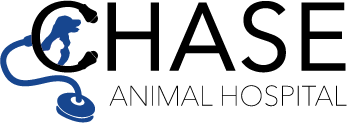Pet Health Articles
-
Dogs chasing their own tail can be amusing but can also be a sign of a bigger problem. Tail-chasing may be a result of boredom, lack of exercise, exploration (in puppies), or cognitive decline (in older dogs). If your dog suddenly starts chasing or biting at his tail, schedule a veterinary visit, as the cause could be medical.
-
Dogs will always lick, but it is sometimes embarrassing when they lick their private parts. Licking after eliminating is normal; however, if your dog licks more frequently, or you notice other signs such as discharge; swollen or red penis, vulva, or anus; pustules; discoloration of the skin; or if your dog strains to urinate, see your veterinarian for help. Appropriate medical therapy can reduce your dog's discomfort.
-
Dog ancestors turned around before bedtime for their health or protection. These innate habits remain to this day, but if your dog seems to be doing it excessively, it could be a sign of underlying medical problems, such as arthritis or neurological disorders. Contact your veterinarian if your dog appears to have difficulty settling down.
-
Regular preventive health care for your cat can increase the length and quality of her life. Healthcare guidelines are established and kept up to date using the most recent evidence-based recommendations including the recommendation that all cats receive a complete veterinary examination at least once a year or more frequently, depending on their individual needs and health concerns.
-
Regular preventive health care for your dog can increase the length and quality of her life. Health care guidelines are established and kept up to date using the most recent evidence-based recommendations including the recommendation that all dogs receive a complete veterinary examination at least once a year or more frequently, depending on their individual needs and health concerns.
-
Punishment is not recommended as a training or behavior management tool for pets. It can cause fear, frustration, and even aggression. Using punishment can seriously damage a pet’s relationship with people. Training should focus on teaching desirable behaviors rather than on simply stopping undesirable ones. When pets exhibit undesirable behaviors, it is important to determine and address the underlying reason for the behavior.
-
The Wire Fox Terrier could be the canine incarnation of an anti-depressant. This merry little chap lives to play and likes nothing better than to make some mischief. And while he is on the smallish side, he has got the courage and tenacity of dogs twice his size.
-
Wirehaired Pointing Griffons demonstrate love and loyalty to family, making the breed a good companion for active owners. Although calm in the house when given plenty of exercise, the breed has a sense of humor and might drag underwear through the house just as the minister comes calling.
-
As a hairless type, these dogs are good for some allergy sufferers – but meet the dog and find out for sure before you commit. They bond so strongly that they can't be rehomed easily, so you need to be in it for the long-haul.
-
The beautiful, feisty Yorkie acts more like a tough terrier than a delicate toy breed. Despite the luxurious, shiny coat, the Yorkie has a working-class attitude, a fondness for chasing small animals, a big-dog bark, and super-sized self-confidence.

